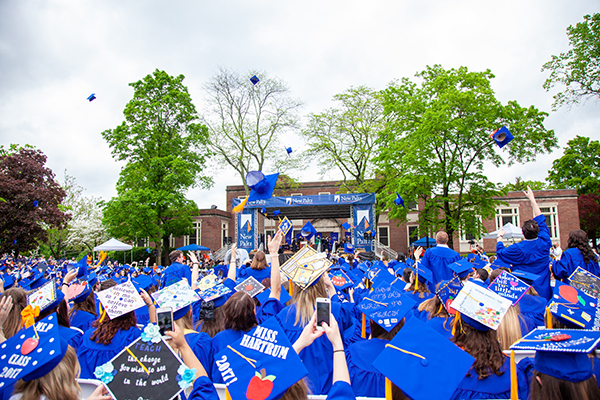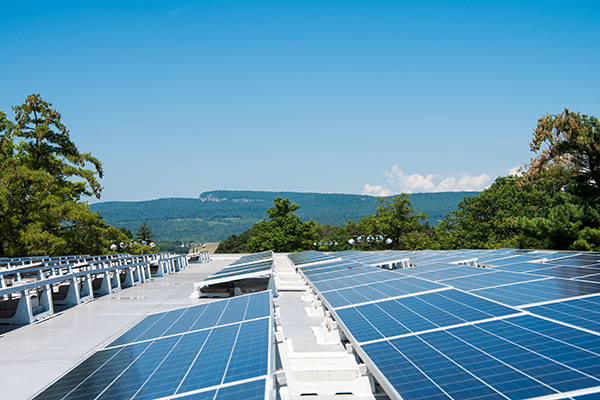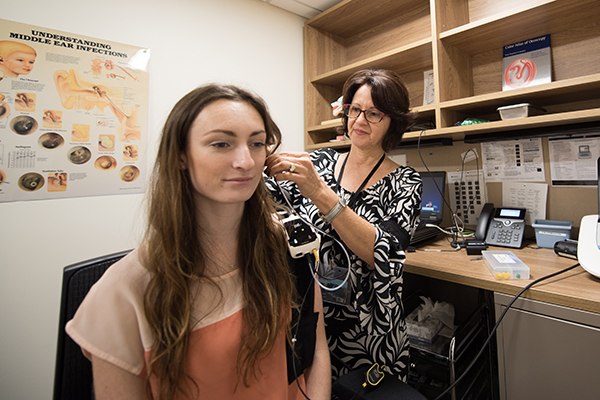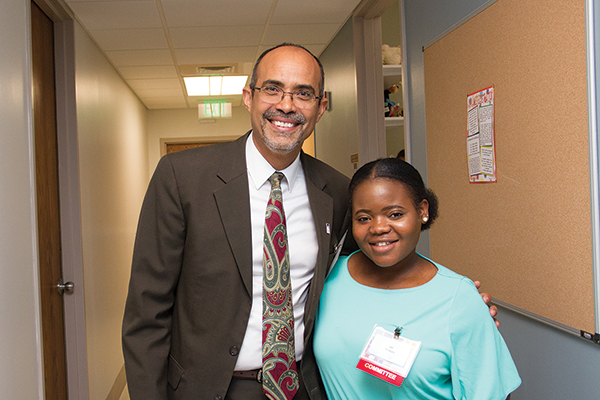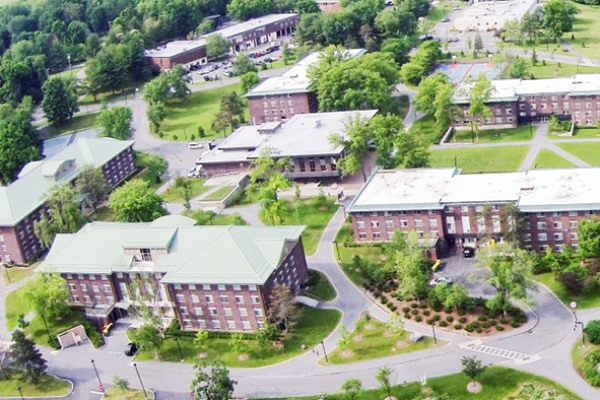Council recommends buildings be renamed and that Huguenot patentees be recognized in other ways.

After a year-long campuswide review and dialogue, the College’s Diversity and Inclusion Council recommended in its report in May that SUNY New Paltz residential building names that honor original Huguenot patentees who owned slaves should be renamed. President Donald P. Christian subsequently supported the Council’s recommendation during his State of the College address in August.
In an effort to not erase history, the report recommends that the College develop approaches to more fully tell its history, including the legacy of slavery in New Paltz and the indigenous people who originally settled here; and develop alternative ways to recognize the many contributions of the Huguenots and their descendants to education and in particular to the institutions that became SUNY New Paltz.
“The Diversity and Inclusion Council reached its recommendation that the building names be removed and replaced while recognizing that there will never be unanimity of opinion on such a deeply rooted and complex topic,” said Christian. “The Council was particularly moved by the belief expressed frequently by students that no one should be asked to live, sleep, and eat in buildings honoring people who enslaved others. The current names make some students feel unwelcomed and not at home here, when a sense of belongingness is a key factor in students’ success.”
The authority to name buildings or change building names rests with the campus College Council and thereafter with the SUNY Board of Trustees. President Christian has shared his recommendation with College Council members – who are appointed by the Governor and include the President of the Student Association as a voting member.
“I am strongly and fully persuaded that changing the names is the right path for our campus at this time,” said President Christian. “I regard making such a change now as consistent with our community values of fostering a diverse and inclusive learning environment, including taking active anti-racist steps such as this.”
At its fall 2018 meeting, the College Council reviewed the D&I Council report and deliberated upon the recommendation and postponed the topic until its next meeting in spring 2019. If they vote to remove the names, the College Council will also be responsible for renaming the buildings.
The six campus buildings include Bevier Hall, Crispell Hall, Deyo Hall, DuBois Hall, Hasbrouck Dining Hall and Lefevre Hall. Research into campus historical documents show that all are named for original Huguenot patentees who were the first European settlers in New Paltz in 1678, not for the families and their descendants who supported the development of a precursor to SUNY New Paltz. The earliest generations of these families in America owned slaves during the period of slavery in New York State. The building names have been contentious on campus for many years, and no official action to review them had been taken until now.
One year ago, President Christian charged the Diversity and Inclusion Council with leading the process to review the building names, and to develop a recommendation either to retain the names or to rename these buildings. This task coincided with increased national discourse and conflict about statues or building names that commemorate or memorialize slavery in America. This also comes at a time that the country continues to wrestle with racial inequities and injustices and the legacy of slavery.
The Diversity and Inclusion Council held multiple forums, educated the community about the College’s history, and solicited broad input from students, faculty, staff, alumni, community members, Huguenot descendants and Historic Huguenot Street leadership. They also studied how other colleges and universities have dealt with the legacy of slavery on their campuses.

